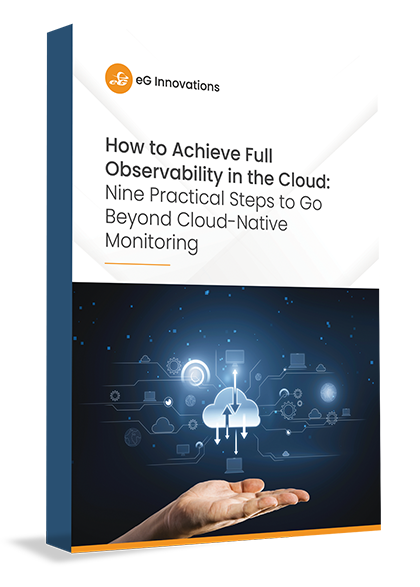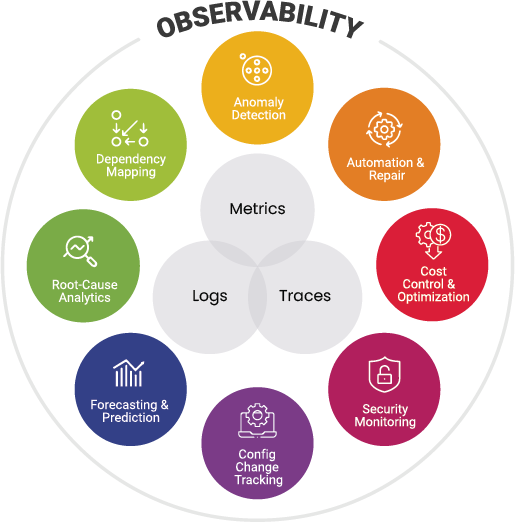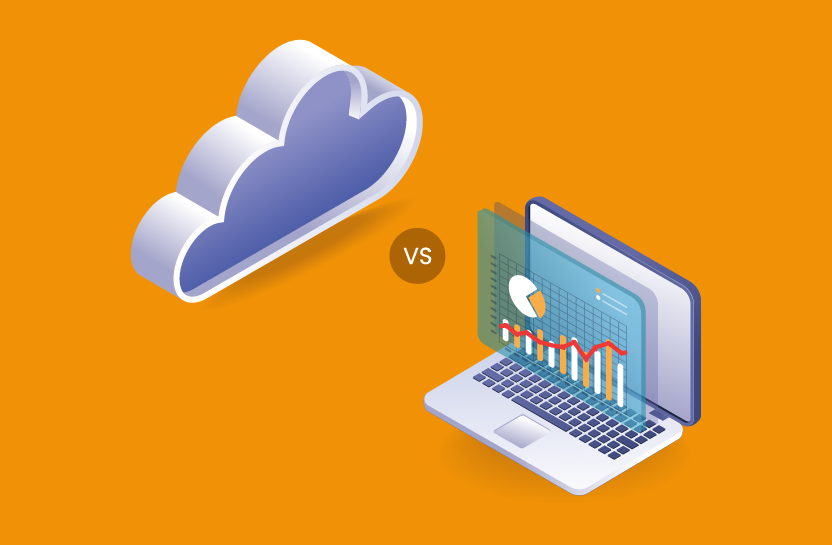 As organizations move their application workloads to the cloud, understanding the difference between cloud observability vs monitoring is crucial to ensure optimal performance and seamless operations. While both concepts are often mentioned in tandem, they serve different purposes, and mastering each can help organizations thrive in increasingly complex cloud environments.
As organizations move their application workloads to the cloud, understanding the difference between cloud observability vs monitoring is crucial to ensure optimal performance and seamless operations. While both concepts are often mentioned in tandem, they serve different purposes, and mastering each can help organizations thrive in increasingly complex cloud environments.
In our new free eBook, “How to Achieve Full Observability in the Cloud: Nine Practical Steps to Go Beyond Cloud-Native Monitoring”, we cover the nuances of these two concepts and explain with practical steps how to achieve full observability – the key to success in any cloud migration project.
Cloud Monitoring: The First Step
Monitoring is the foundation of any robust cloud strategy. It involves tracking metrics, logs, and trace data from various layers of your cloud infrastructure and the applications running on it. For example, monitoring can provide you with insights into the performance of CPU usage, memory consumption, or response times of critical applications.
While cloud monitoring is essential, it has its limitations. Monitoring only tells you what is happening. It does not explain why something is happening or provide visibility into the deeper layers of your cloud architecture to pinpoint root causes.
That’s where cloud observability comes in.
Cloud Observability: The Next Evolution
The difference between cloud observability vs monitoring lies in the depth of insight. Observability goes beyond simple metric tracking. It is about having complete visibility into the internal state of your cloud systems by observing and understanding the complex interactions within your services.
Achieving full observability means being able to:
- Monitor every layer and every tier of your service delivery chain
- Obtain cloud-specific insights into different environments like AWS (Amazon Web Services), Azure, and Alibaba Cloud
- Gain macro views of service topology for quick problem demarcation
- Access deep application visibility to spot anomalies in real-time
- Leverage AIOps (Artificial Intelligence for IT Operations) to automate root-cause diagnostics
With observability, you gain the ability to troubleshoot more effectively, optimize performance, and reduce downtime. It helps you answer critical questions like why a service is underperforming, where a bottleneck is occurring, or how a failure can be prevented in the future.

The Importance of Full Observability in Cloud Migration
 For businesses undergoing cloud migration, monitoring alone is not enough. Observability becomes essential as it provides a 360-degree view of the entire cloud environment. Our eBook explains how incorporating key observability benefits like resource right-sizing, cost optimization, and outage visibility can make a significant impact on the success of cloud migration projects.
For businesses undergoing cloud migration, monitoring alone is not enough. Observability becomes essential as it provides a 360-degree view of the entire cloud environment. Our eBook explains how incorporating key observability benefits like resource right-sizing, cost optimization, and outage visibility can make a significant impact on the success of cloud migration projects.
By leveraging observability, organizations can:
- Proactively detect and resolve issues before they impact end users
- Right-size resources for optimal performance and cost-efficiency
- Maintain compliance with robust tracing and auditing capabilities
If you are ready to take your cloud strategy to the next level, this new eBook – “How to Achieve Full Observability in the Cloud: Nine Practical Steps to Go Beyond Cloud-Native Monitoring” is must-read. Whether you are just beginning your cloud migration journey or looking to optimize your current cloud infrastructure, this guide will help you navigate the complexities of cloud observability vs monitoring and set you up for long-term success.
To learn more about eG Innovations solutions for cloud, hybrid-cloud and multi-cloud – please visit: Public, Private, And Hybrid Cloud Monitoring Tools.
eG Enterprise is an Observability solution for Modern IT. Monitor digital workspaces,
web applications, SaaS services, cloud and containers from a single pane of glass.




 Miguel is based out of our APAC HQ in Singapore. Having obtained a degree from Manchester University, UK places Miguel well to provide marketing and field support to the teams in the region and the wider global eG Innovations team.
Miguel is based out of our APAC HQ in Singapore. Having obtained a degree from Manchester University, UK places Miguel well to provide marketing and field support to the teams in the region and the wider global eG Innovations team. 



